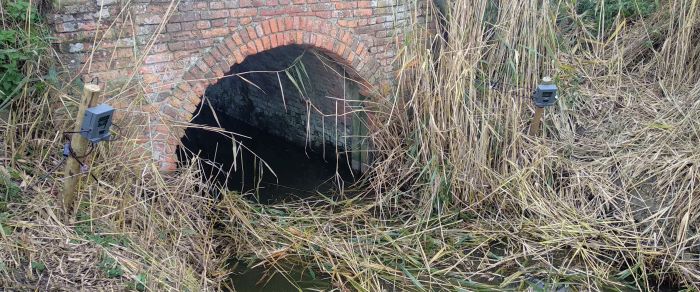Life MICA aims to reduce coypu and muskrat population to a manageable size

Through the European Life MICA project, smart traps with camera detection will be set in the coming years. These traps will only catch coypu and exclude any bycatch. DNA is also used from the environment as a check on a successful control campaign.
MICA: what and why?
Invasive non-native species such as the coypu and the muskrat pose a threat to biodiversity. They cost society millions of euros every year. The animals feed on roots of rushes and reeds, and dig into dikes. This causes serious damage to the environment. As dikes are affected, endangered species suffer and there are safety risks to people living in low-lying areas.
Purpose of the project
LIFE MICA is an international collaboration with the goal of reducing muskrats and coypu to a manageable population. Both rodent species must be eradicated from our territories to avoid damage to dikes and damage to biodiversity. The project thus focuses on preventing and controlling damage to biodiversity and ecosystem services from invasive exotic species. This will allow ecosystems to recover, dikes to maintain their strength and water safety is secured. This also means there is no further damage to crops.
Low population densities are making it increasingly difficult to capture the last muskrat, thus increasing the effort per catch. The new techniques that Life MICA is putting forward could greatly change our operation and help us detect muskrats, even at low densities, more efficiently.
Pilot projects
The objective of the project is to conduct pilot and demonstration projects. These will develop a number of best practices and new techniques to make muskrat and coypu control more efficient.
VMM's rat control officers are being deployed in 4 pilot areas to test the new techniques and methodologies in the field. We are doing this in close consultation with the INBO and the other project partners. Meanwhile, DNA has been collected for population mapping, tens of thousands of images from wildlife cameras have been collected, read and screened and, of course, regular muskrat and coypu control is still running at full speed.
Role of the VMM
The VMM controls both muskrats and coypu in Flanders and is doing this so thoroughly that both species have practically disappeared in large parts of Flanders.
More information on LIFE MICA »
MICA in Europe
Life MICA is carried out on behalf of the European Commission within the LIFE Projects programme led by the Waterschap Rivierenland. The implementation of the project involves several partners from Belgium, Germany and the Netherlands. As such, the project is also promoting international collaboration and knowledge exchange in the field of muskrat and coypu control.
| Partners | |
|---|---|
| Belgium |
Flanders Environment Agency (VMM) Flemish Institute for Nature and Forestry Research |
| Germany |
Chamber of Agriculture in Lower Saxony University of Veterinary Medicine Hannover, Institute for Terrestrial and Aquatic Wildlife Research |
| Netherlands |
University of Amsterdam Union of Water Boards Waterschap Rivierenland |
Start date: autumn 2019 – End date: autumn 2023



